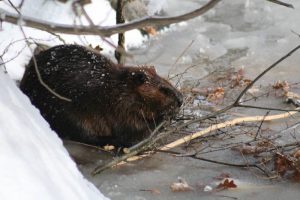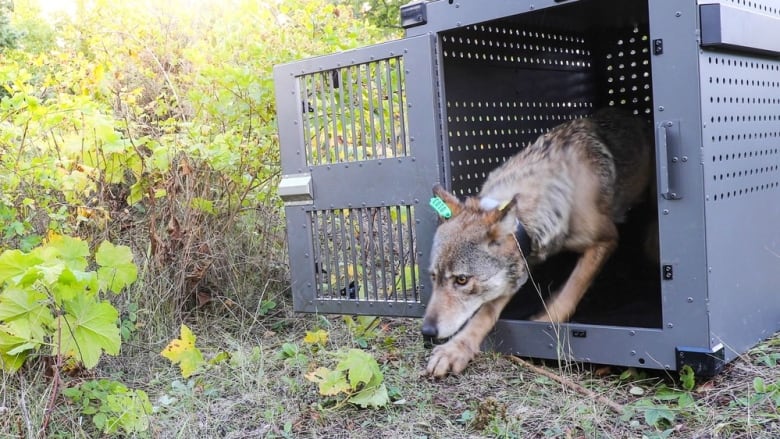
1975 Big Trout Lake
The first time I can remember talking about Big Trout Lake was perhaps 20 years ago when the late Dr. Harkness was Chief of the Wildlife Branch. An argument developed about where “north” in Ontario was. Some believe that when they get to Muskoka or Parry Sound they are in Northern Ontario. But Dr. Harkness claimed until you had visited Big Trout Lake you could not say you had been in the real north.
The lake is in the Patricia District. It is about two and one-half hours flying time by Turbo Otter from Sioux Lookout. Sioux Lookout is sixty miles from Dryden, and Dryden is twenty-five hours on a C.P.R. passenger train from North Bay. That is quite a distance and by the feel of the north west wind it was about thirty below. I can truly say it is in the “north”.
This trip was part of our scheduled tour of trapper workshops and as it was to be the last I had been looking forward to it. There was a time when Big Trout Lake was considered to be one of the best, if not the best, lake trout lakes in the north. There is also a commercial fishery going on all the time though a lot of their catch is white fish.
It had been arranged that there would be a fire in the Department Cabin where we would stay but this had not been done but it wasn’t long before the camp was comfortable. I had a change of guides on this trip. Overseer Adair went on this trip. There also was an O.P.P. constable making a tour of the village plus the pilot and his mechanic. We took in the fur to be skinned on the course. This plus supplies and gas made just about a full load.
Must mention the pilot. He was an older man than we usually think bush pilots to be. In fact, he has had thirty-five years service with the Air Branch of the Department. He flew bombers during the war. But it was the way he handled the plane that took my eye. I have done quite a bit of bush flying and mostly it seemed that the pilots kept very much active with the controls. This man, Harry Spate, was as nonchalant as most of us are when we are using a knife and fork. Was told that even when counting moose or beaver houses he could handle the Otter as well for such work as most pilots handle smaller planes.
Going in for the landing I was surprised to see the Hudson Bay store, which looked so clean and fresh it could have been one of the stores in any town. A snowmobile met us and everyone was transported to camp. Seemed like a funny location for a camp, right at the edge of a graveyard, and there are head stones and crosses right close to the camp. Too, the Anglican Church and the Minister’s house are close by.
My guide arranged the meeting. He went to the local radio station and made a tape, which was played at intervals during the rest of the day and evening. During the afternoon several planes landed at the air strip. There is a flying service for float and ski planes, believe it is called Bearskin Airways. D.C. 3s make a couple of landings each day.
About 20 showed up for the meeting that evening. Some did not speak English so we had an interpreter. Next morning there were fewer as some had to work but I noticed some visitors, the local Anglican Minister and his wife. Both very interested, and we were invited to their place for lunch.
My guide had suggested that perhaps we should ask one of the local men to sew a beaver skin on a hoop as this method is used almost entirely by the local trappers. Got a bit of a set back when we suggested it to one of the trappers and he replied, “That is woman’s work.” So we asked for a woman and the next morning she came in. I had skinned the beaver and they supplied a hoop. She first sewed the hide in the frame, then stood it outside to freeze as it makes them easier to scrape. I had tried to do a good job. So I suggested the interpreter ask her to look it over. She did, very carefully, and then said something to the interpreter. He chuckled and I asked him what she thought of it. She had said not bad, but she thought she could do a better job. Sort of deflated my ego but she did do a nice job on her beaver.
The Rev. McNear and his wife are lovely hosts. We were shown quite a collection of Indian Craft that she hopes to sell, and it is all good. They do not mind outpost work as they had had a similar parish in northern Manitoba. They have four children, three of whom are attending school.
He has an assistant, a native man who speaks no English but is working hard to help his people. Odd to see the words over the church door in Cree. The village, nearly all native people, has about six hundred people. It is a very old village and they go quite some distance for their stove wood. Few trap, most are on relief. Seems like most of them have a snowmobile and even when gas is two dollars per gallon there are many of these machines running around. And noone goes fishing. The parson showed me a fish that must have weighed more than twenty pounds and he told me fish that size were quite common. A lake like that in the front yard and noone fishing.
On the way out the man sitting next to the window was watching below and motioned to the pilot who took a quick turn, too quick for me, and went down and there were seven wolves feeding on a moose. Later we went down to watch a pair of moose, the bull still with his antlers. I will always remember when the Indian woman did not think too much of my beaver skinning and the way the pilot handled that airplane.
